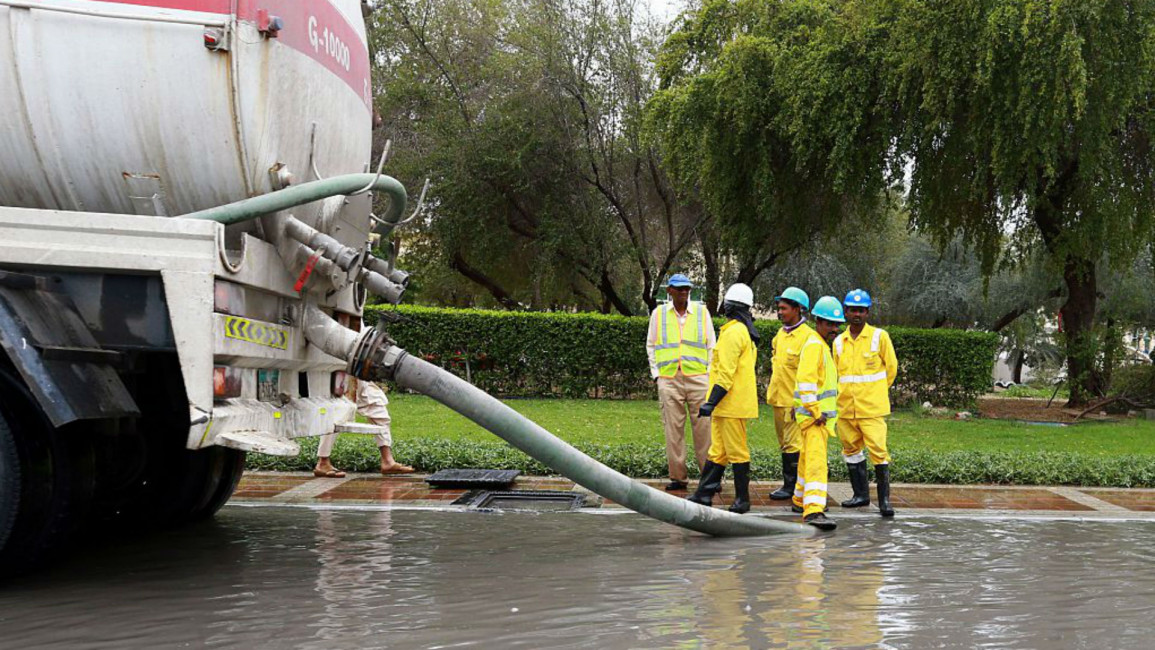UAE could have flooded itself with cloud seeding operations
Cloud seeding, a scientific method of modifying weather conditions to encourage rainfall, could have led to flooding in the UAE earlier this month, when much of the country drenched with downpours, according to media reports.
Northern emirates in particular were hit with flooding after deluges hit the UAE on 10 November and the following days, leading to major disruptions for drivers.
Media reports suggest that the flooding could have been due to cloud seeding operations that took place during those days, in a bid to encourage rainfall in the usually dry Gulf state.
An official from the UAE's National Center of Meteorology (NCM) told Dubai-based Gulf News that cloud seeding operations were carried out a day before the unusually wet weather.
Cloud seeding is a method used to expand rain clouds by firing salt-like particles into the air from aircraft.
It is used widely in the UAE, one of the driest countries on earth with only 120mm rain a year, to encourage rain during cloudy weather.
Last year, between 10 to 15 percent of downpours in the country were due to cloud seeding, Gulf News reported.
Although the UAE carries out scores of cloud seeding operations each year, this time it appeared to backfire with Dubai Mall among parts of the country hit with floods.
"Dubai Mall was affected by the heavy rainfall, causing leakages in limited areas. We are working to contain all leakages and the mall remains operational and open to the public. Mall staff are on the ground, ensuring the visitor experience remains unaffected," the operator said last week, after videos emerged showing parts of the mall submerged in water.
The UAE's National Centre for Meteorology admitted it carried out cloud seeding operations hours before the downpours but it is not known if this contributed to the flooding.
"We just enhance the cloud," said Khalid Al-Obeidli, the head of the programme at the centre told The National.
"We can seed as long as there are clouds and it's suitable for seeding. We started seeding on Saturday when the [weather] system affected the UAE."
Flooding is common in Gulf states during the winter, when the area is most susceptible to torrential rain, while poor drainage also contributes to the problem.
Other Gulf states are considering using cloud seeding, due to low rainfall making it essential to import water or using desalination.
The UAE is in the first stages of a scheme to build a man-made mountain, to look for alternative methods to increase rainfall.
The UAE is set for more wet weather, including storms, this week, according to forecasts.


![Minnesota Tim Walz is working to court Muslim voters. [Getty]](/sites/default/files/styles/image_684x385/public/2169747529.jpeg?h=a5f2f23a&itok=b63Wif2V)




![Debris near Rafic Hariri International Airport [Getty]](/sites/default/files/styles/image_212x120/public/2176162423.jpeg?h=a5f2f23a&itok=XLiO6WHk)
![An Israeli air strike on Jabalia killed teenage journalist Hassan Hamad [Screengrab/X]](/sites/default/files/styles/image_330x185/public/2024-10/hassan%20hamad1.jpg?h=c12e0b96&itok=Rd_dyCVp)
